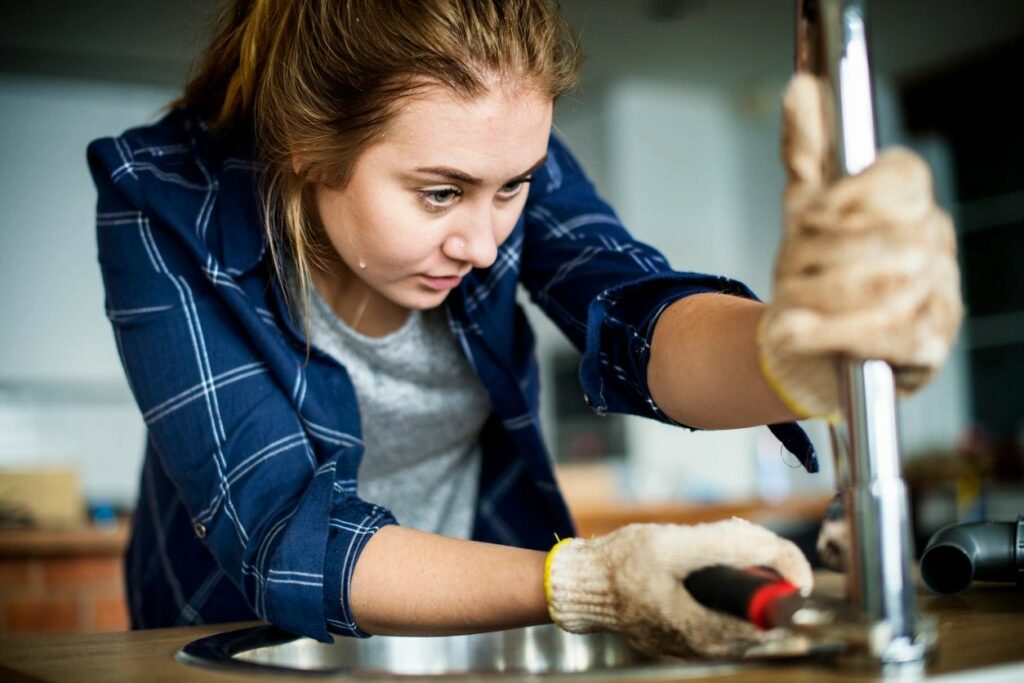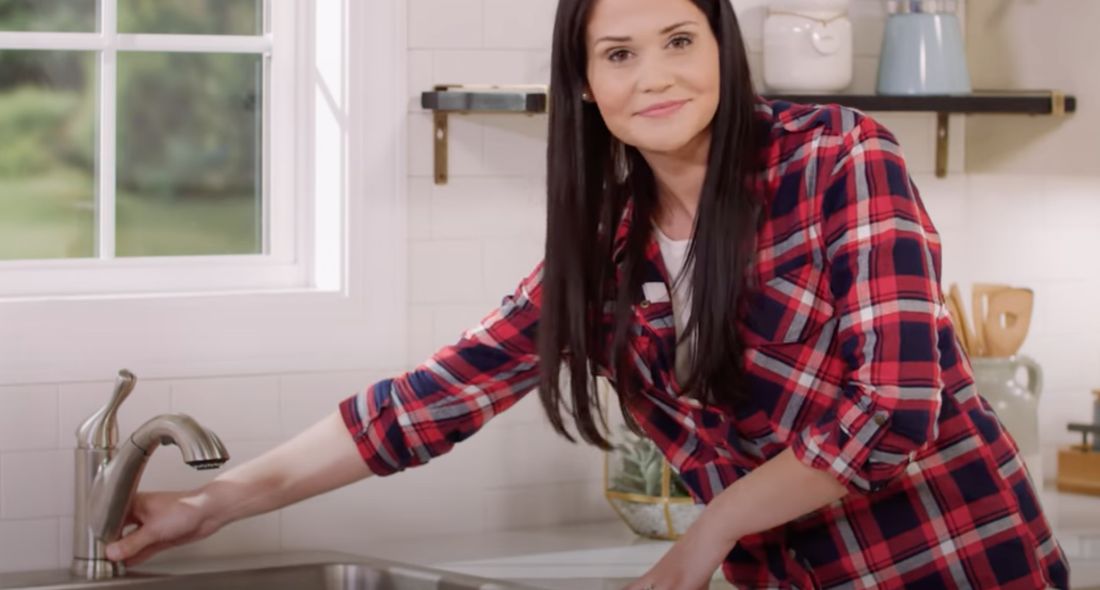When It's Needed to Repair a Leaking Faucet
When It's Needed to Repair a Leaking Faucet
Blog Article
They are making a number of great points relating to How to Fix a Dripping or Leaky Faucet overall in this great article underneath.

Trickling taps may look like a minor inconvenience, but their effect exceeds just the nuisance of the sound. From drainage to sustaining unneeded economic expenses and health threats, neglecting a leaking tap can bring about numerous repercussions. In this short article, we'll delve into why it's important to address this common house concern without delay and properly.
Wastefulness of Water
Environmental Impact
Dripping faucets add dramatically to water waste. According to the Epa (EPA), a solitary faucet leaking at one drip per secondly can squander greater than 3,000 gallons of water annually. This not just strains water resources however likewise influences communities and wild animals depending on them.
Step-by-Step Overview to Repairing a Dripping Faucet
Tools Called for
Before attempting to repair a dripping faucet, gather the required devices, including a flexible wrench, screwdrivers, replacement parts (such as washers or cartridges), and plumber's tape.
Common Faucet Issues and Their Solutions
Identify the type of faucet and the specific problem creating the drip. Typical problems consist of damaged washing machines, corroded valve seats, or faulty O-rings. Describe supplier directions or on the internet tutorials for detailed guidance on repair work.
Financial Prices
Enhanced Water Expenses
Beyond the ecological effect, dripping taps can blow up water expenses considerably. The accumulated wastage gradually converts into greater utility expenditures, which can have been avoided with prompt repair work.
Possible Property Damage
Additionally, extended leaking can cause damage to fixtures and surface areas bordering the tap. Water build-up can trigger staining, rust, and also architectural concerns if left neglected, resulting in added repair work costs.
Health and wellness Worries
Mold and Mildew Growth
The continuous presence of dampness from a trickling tap produces an excellent setting for mold and mildew development. These fungi not only compromise interior air top quality but also pose wellness dangers, specifically for people with respiratory system conditions or allergies.
Waterborne Illness
Stagnant water in dripping faucets can come to be a breeding place for microorganisms and various other virus, enhancing the danger of waterborne conditions. Impurities such as Legionella bacteria flourish in stagnant water, possibly causing serious illnesses when ingested or breathed in.
DIY vs. Professional Repair service
Pros and Cons of Do It Yourself Fixing
While some may attempt to take care of a leaking faucet themselves, DIY repair work include their own set of challenges. Without proper knowledge and devices, DIY attempts can exacerbate the concern or bring about insufficient fixings, lengthening the issue.
Benefits of Hiring a Professional Plumber
Working with a specialist plumber ensures that the underlying cause of the trickling faucet is attended to successfully. Plumbing professionals possess the knowledge and equipment to detect and repair tap issues efficiently, saving time and decreasing the danger of more damage.
Ecological Responsibility
Private Contribution to Preservation
Taking duty for taking care of dripping taps aligns with more comprehensive efforts toward water conservation and ecological sustainability. Every person's activities jointly make a considerable effect on preserving precious sources.
Sustainable Living Practices
By focusing on prompt repairs and taking on water-saving routines, people add to lasting living methods that benefit both existing and future generations.
Safety nets
Routine Maintenance Tips
To stop leaking taps, carry out routine upkeep such as cleaning aerators, checking for leaks, and changing damaged components quickly. In addition, consider mounting water-saving devices or upgrading to much more reliable components.
Importance of Prompt Fixes
Addressing dripping faucets as quickly as they're observed protects against further water wastage and prospective damages, inevitably conserving both water and cash in the future.
Influence On Property Value
Perception of Well-Maintained Residential Or Commercial Property
Maintaining a property in good condition, consisting of resolving upkeep issues like trickling taps, enhances its regarded value and desirability among potential purchasers or tenants.
Impact on Resale Worth
Features with well-kept plumbing fixtures, consisting of taps, command higher resale values in the property market. Addressing leaking taps can add to a positive perception throughout home examinations and arrangements.
Conclusion
Dealing with a leaking tap surpasses plain convenience; it's an important step towards preserving water, lowering economic prices, and guarding wellness and property. Whether via do it yourself repairs or professional assistance, doing something about it to deal with leaking faucets is a small yet impactful means to promote liable stewardship of resources and contribute to a much healthier, much more sustainable future.
How to Fix a Leaky Faucet: Step-by-Step Repair Guide
A leaky faucet may seem like a simple annoyance, but if it's not fixed promptly, that leak could cost hundreds to potentially thousands. From water damage to mold, mildew, and high water bills, even a tiny leak can be catastrophic if left unattended. Damage like this can even affect the overall value of your home, so it's important to take the right approach for leaky faucet repair. You may need the help of a plumber in some cases, but we've got a few tips you can try on how to fix a leaky faucet before calling the pros.
Four Faucet Types
When you're learning how to fix a leaky faucet, the first step is knowing what kind of faucet you're working with! There are four common types.
Cartridge Faucets
Cartridge faucets come in one- or two-handled varieties. In one-handled cartridge faucets, hot and cold water combines in a single cartridge. In the two-handled versions, hot and cold water are controlled separately and mixed in the faucet.
Ball Faucets
Ball faucets have a single lever you push up and down to adjust the pressure and rotate to change the temperature. A slotted metal ball controls the amount of water allowed into the spout.
Compression Washer Faucets
They're the oldest type of faucet, but they're still used in many homes — especially older ones. Compression faucets have two separate handles that, when turned, raise or lower the washer that seals a water valve. This valve stops water from flowing through the faucet when it is turned off.
Disc Faucets
Disc faucets rarely need to be repaired due to their maintenance-free design. The water flow is controlled by two discs — the upper one raises and lowers against a fixed lower disc, creating a watertight seal. If your disc faucet starts leaking, you may need to replace the seals or clean residue buildup from the inlets.
Fixing a Leaky Faucet
Step 1: Turn Off the Water
Whether you're learning how to fix a leaky bathtub faucet or how to fix a leaky kitchen faucet, always turn off the water supply to your working area when you're fixing a leak. The last thing you want is a flood added to your list of things to fix.
Look for the shutoff valves below your sink or around the tub and turn them clockwise to stop the water flow. If your faucet doesn't have shutoff valves, you may need to turn off the water for the whole house. Check to make sure it's off by turning the faucet on. If nothing comes out, you're ready to start the repair.
Step 2: Take Apart the Faucet
How you disassemble your faucet depends on the type of fixture you have. You can use a flathead screwdriver to remove the caps on top of the handle or handles for cartridge and compression faucets. Inside, you should see handle screws. Unscrew these with a screwdriver to remove the handle.
Disc- and ball-style faucets will typically have an inlet screw near the handle, and removing that will reveal the interior of the faucet.
Detach the Valve Stem
For cartridge- and compression-style faucets, you'll see the inner valve stem or cartridge once you remove the faucet handles. If you have a compression faucet, unscrew the brass valve stem. If you have a cartridge faucet, pull out the cartridge. If your cartridge has been in place for a while, it may require some tools or extra force to remove it due to mineral deposits.
Examine and Replace Parts
Once you've removed the parts, check them out to confirm what needs to be replaced. You may see corroded rubber washers, O-rings, stems, or cartridges. On a ball-style faucet, check the seats and springs for damage.
If you need to repair a leaky disc faucet, check the inlet and seals on the lower disc.
Once you determine what parts must be replaced, visit your local hardware store. Bring the damaged parts with you to ensure you can purchase the correct components to replace them.
Clean Valves and Faucet Cavity
If you've removed a stem or cartridge, you may notice mineral buildup in the faucet's threads. Use white vinegar to clean the valve seat by soaking it for a few minutes, then scrub it away with a soft toothbrush and rinse with warm water. You can also clean the interior of the faucet in the same way.
Reassemble the Faucet
Once your faucet is cleaned and the required parts have been replaced, it's time to reassemble it. Put the pieces back together and slowly turn the water supply back on. Doing this slowly is crucial because too much initial water pressure can damage the new hardware you've just installed.
https://homewarranty.firstam.com/blog/how-to-fix-leaky-faucet

We were made aware of that write-up about 4 Common Reasons for a Leaky Faucet from a buddy on our other site. Enjoyed reading our blog posting? Please share it. Let someone else check it out. Thanks a lot for your time. Don't hesitate to come visit our blog back soon.
Report this page